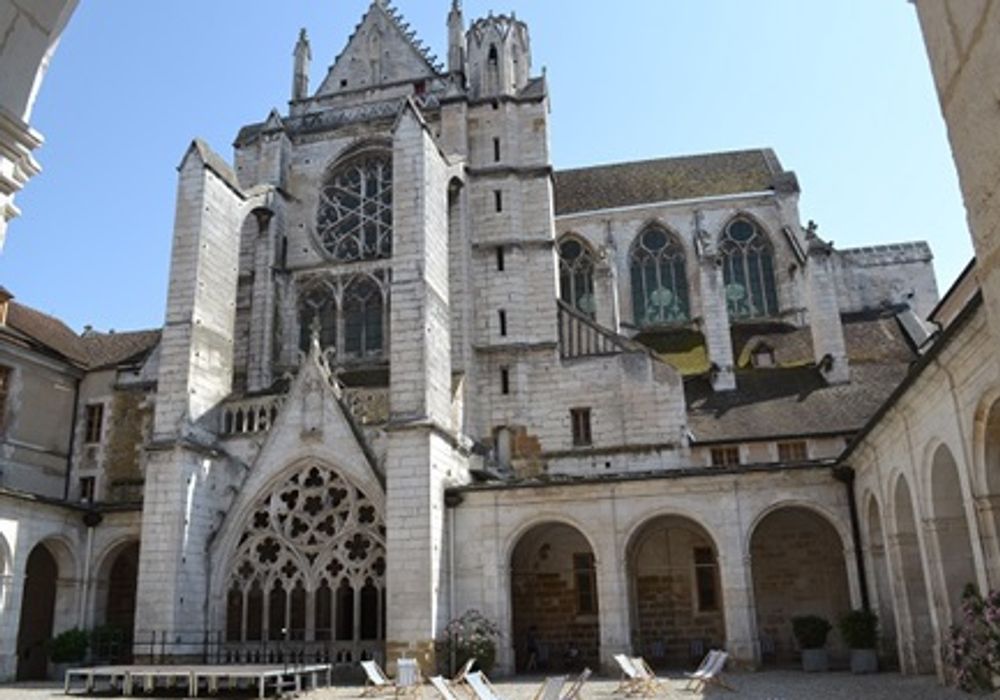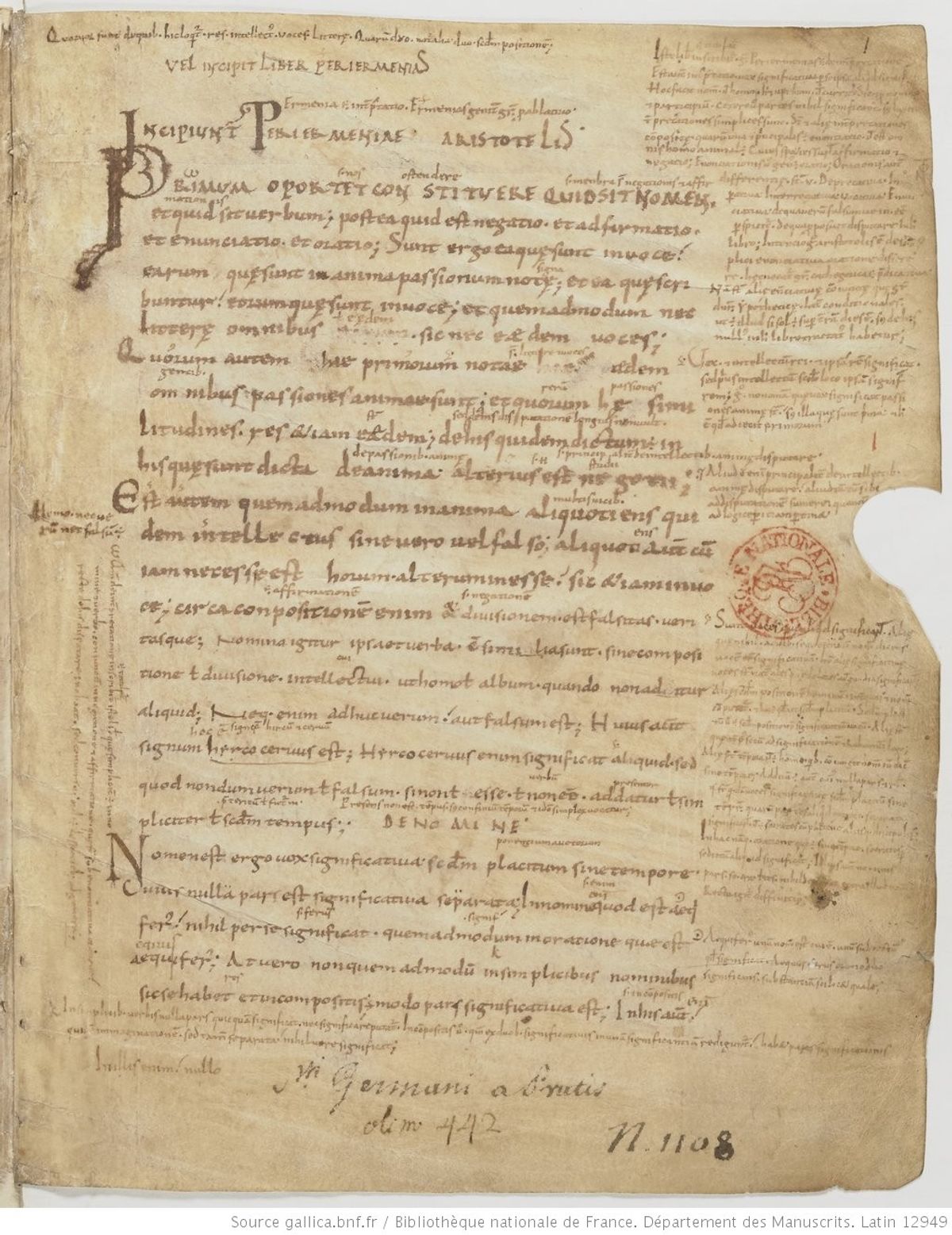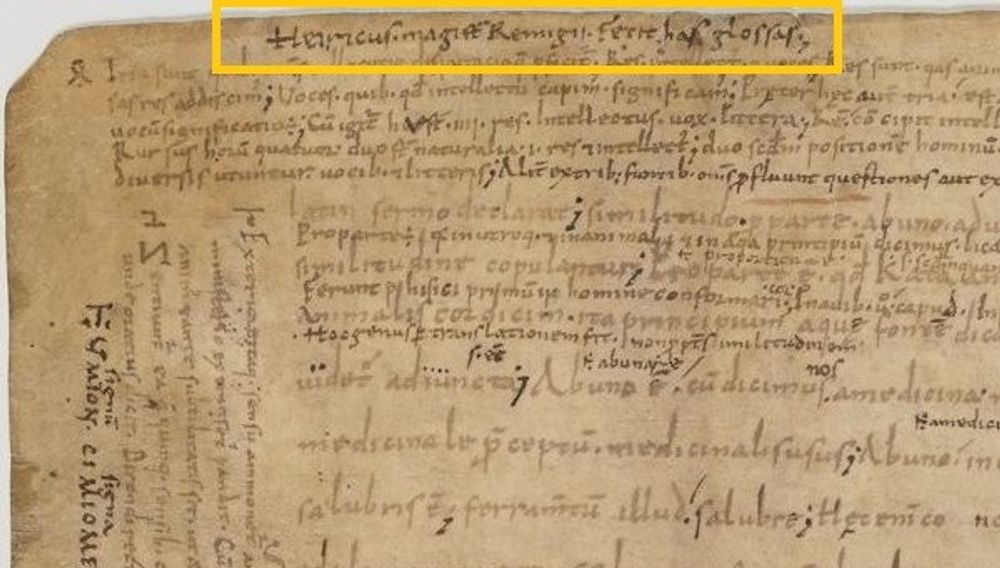Heiric, Remigius and the School of Auxerre
Auxerre and its masters in the Carolingian period1
The monastery of St. Germain at Auxerre was founded in the fifth century. It had an important and influential school in the Carolingian period. Two of its masters were Heiric and Remigius of Auxerre, both known for their copious production of commentaries or gloss-collections. Heiric (841-876) was a member of the monastic community at Auxerre from a child’s age on: it was common practice, in the early middle ages, to donate children to monasteries as oblates, new prospective members of the community. Heiric himself showed intellectual promise, and was taught by a famous master: Lupus of Ferrières (c. 805-c. 862), a scholar at the court of the Carolingian emperor Charles the Bald.

http://www.bourgogneromane.com/edifices/auxerre.htm
Teachers in manuscripts
Teachers are present in manuscripts by means of their glosses and commentaries: their explanations were written down in the margins of the texts they taught. Generally speaking, these marginal texts are anonymous: they are explanations, associations, synonyms or other thoughts about the texts in the centre of the page. They are often without title, which could identify them as the work of a certain author. In rare cases, however, we do find the names of some masters. A particular rich case is manuscript Paris, BnF, Lat. 12949, in which we find several names, and among them are the names of Heiric and Remigius of Auxerre.

https://gallica.bnf.fr/ark:/12148/btv1b10542356v
Paris, BnF, Lat. 12949 is a manuscript with a set of texts on logic. On this opening page, fol. 1r, the Latin translation of Aristotle’s On Interpretation starts: “INCIPIUNT PERIERMENIAE ARISTOTELIS”. In the margins and in between the lines, many notes have been added, even across the page.


Here, on fol. 24r, we see a text which is even more heavily glossed: the whole space around the text is filled with comments. It is the Latin translation of Aristotle’s Categories, attributed to Augustine as we can read in line 7: “CATHEGORIAE ARISTOTELIS AB AuGUSTINO DE GRECO IN LATINUM MUTATAE”.


Here on fol. 25v a title has been added to the notes (the yellow box is ours): “Heiricus magister Remigii fecit has glossas”, “Heiric, the master of Remigius, made these glosses”.

https://gallica.bnf.fr/ark:/12148/btv1b10542356v
Remigius of Auxerre: champion of commentaries?
Remigius, the last of the great teachers of Auxerre, has been credited with the composition of around twenty commentaries! It is a matter of debate whether he actually authored all these commentaries, compiled them from existing commentary traditions, or had them compiled by students and scholars in his school.
In manuscript Paris, BnF, lat. 7900A, we see his commentary on the book on Dialectic in Martianus Capella’s De nuptiis. The main text is in the small column on the left (marked off with a red line by us), the commentary is in the wide column on the right (outlined in orange).


https://gallica.bnf.fr/ark:/12148/btv1b10546779x
Source used for this contribution:
- L’école carolingienne d’Auxerre: de Murethach à Remi 830-908, ed. D. Iogna-Prat, C. Jeudy, G. Lobrichon, Paris: Beauchesne, 1991)
Contribution by Mariken Teeuwen.
Cite as, Mariken Teeuwen, “Heiric, Remigius and the School of Auxerre”, The art of reasoning in medieval manuscripts (Dec 2020), https://art-of-reasoning.huygens.knaw.nl/auxerre. ↑


 Next Read:
Next Read: